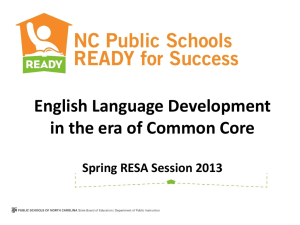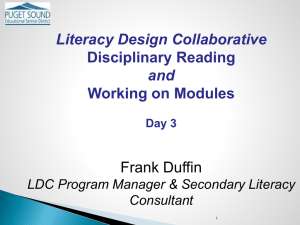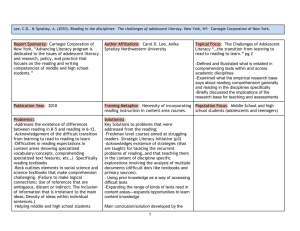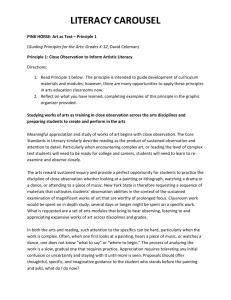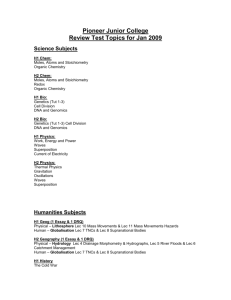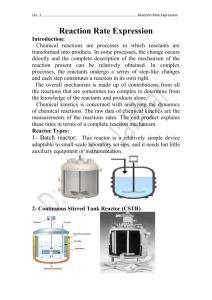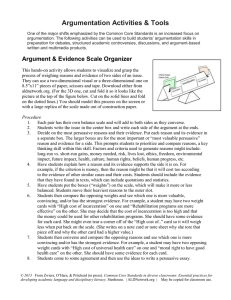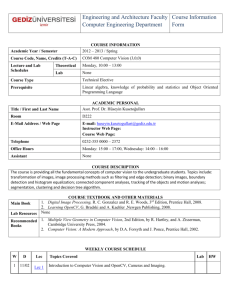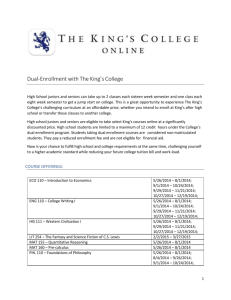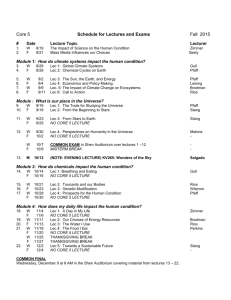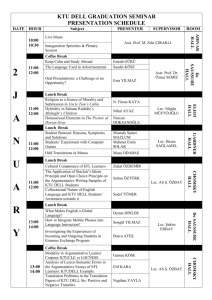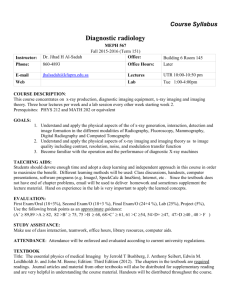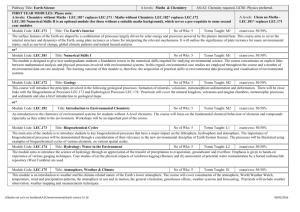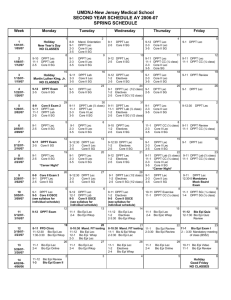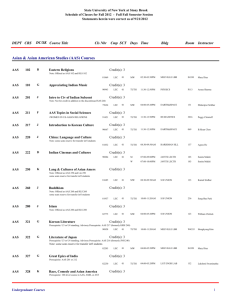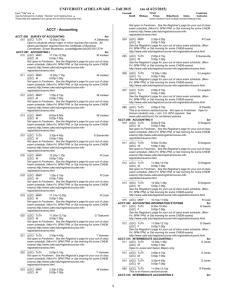Syllabus-Oct-30
advertisement
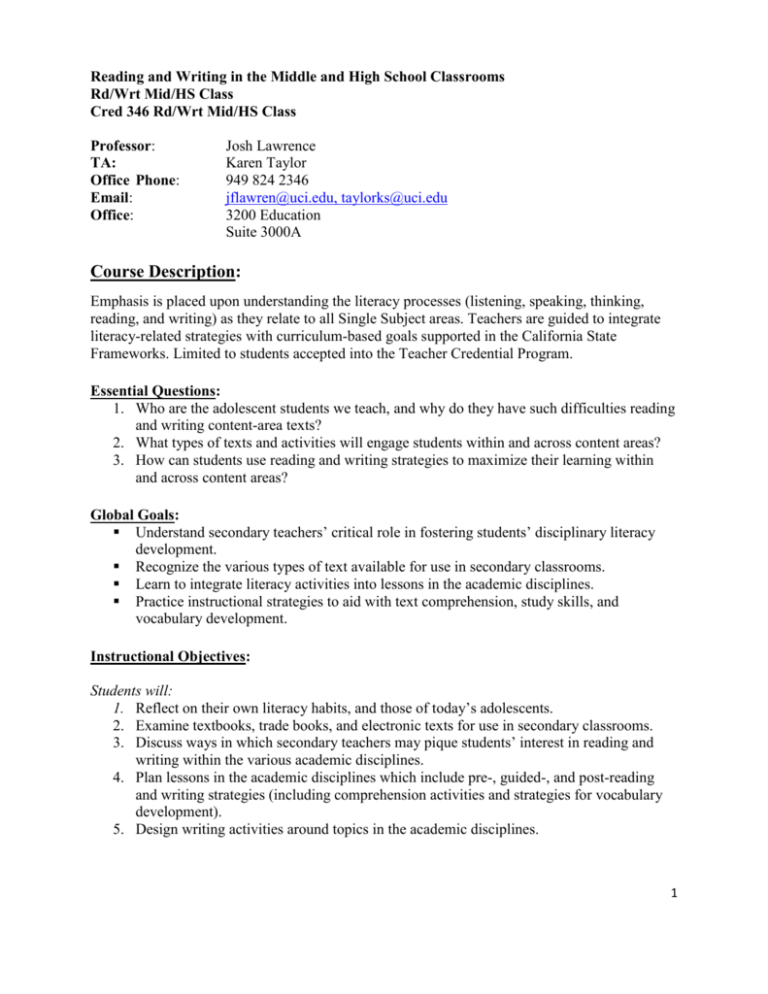
Reading and Writing in the Middle and High School Classrooms Rd/Wrt Mid/HS Class Cred 346 Rd/Wrt Mid/HS Class Professor: TA: Office Phone: Email: Office: Josh Lawrence Karen Taylor 949 824 2346 jflawren@uci.edu, taylorks@uci.edu 3200 Education Suite 3000A Course Description: Emphasis is placed upon understanding the literacy processes (listening, speaking, thinking, reading, and writing) as they relate to all Single Subject areas. Teachers are guided to integrate literacy-related strategies with curriculum-based goals supported in the California State Frameworks. Limited to students accepted into the Teacher Credential Program. Essential Questions: 1. Who are the adolescent students we teach, and why do they have such difficulties reading and writing content-area texts? 2. What types of texts and activities will engage students within and across content areas? 3. How can students use reading and writing strategies to maximize their learning within and across content areas? Global Goals: Understand secondary teachers’ critical role in fostering students’ disciplinary literacy development. Recognize the various types of text available for use in secondary classrooms. Learn to integrate literacy activities into lessons in the academic disciplines. Practice instructional strategies to aid with text comprehension, study skills, and vocabulary development. Instructional Objectives: Students will: 1. Reflect on their own literacy habits, and those of today’s adolescents. 2. Examine textbooks, trade books, and electronic texts for use in secondary classrooms. 3. Discuss ways in which secondary teachers may pique students’ interest in reading and writing within the various academic disciplines. 4. Plan lessons in the academic disciplines which include pre-, guided-, and post-reading and writing strategies (including comprehension activities and strategies for vocabulary development). 5. Design writing activities around topics in the academic disciplines. 1 Grading: Attendance, Class Participation, & Professionalism Class assignments Final Design Projects *Note: The final project takes the place of an in-class exam. 25% 40% 35% Attendance Standards: Because the most powerful learning happens when learners are members of a community, attendance, promptness, and participation in the class are critical for all members of the class. When members of a learning community are absent or late, not only does their own learning suffer, but also the learning of the entire group is diminished. Teachers are in their classrooms 94% of the time (see http://www.nctq.org/dmsView/RollCall_TeacherAttendance). Using this as a benchmark, we have created the following system for assessing attendance and lateness. 1) You can be late or absent for one class with no penalty to your grade if you have given us (and your team) at least seven days notice. 2) If you face a last minute emergency and cannot give one weeks notice you have two options: a. you will lose 10% of your participation grade if you call (512) 887-8825 or email teachadlit@gmail.com at least 30 minutes before the start of class. b. you will lose 20% of your participation grade if you do not call (512) 8878825 or email teachadlit@gmail.com at least 30 minutes before the start of class. Class Participation: Facilitators come at the start of class (Lec C = 9:00am; Lec A = 12:30pm). They have carefully read the assigned chapters, annotated their book, readings or data, and have looked carefully at the protocol that they have been asked to facilitate. Notetakers come later (Lec C = 9:15 am; Lec A = 12:45pm). They have carefully read the assigned chapters, annotated their book, readings or data. They participate actively in the discussion, and are prepared with a pen and paper in case they are asked to record notes for that week. Timekeepers come later (Lec C = 9:15 am; Lec A = 12:45pm). They have carefully read the assigned chapters, annotated their book, readings or data. They participate actively in the discussion, and are prepared with smart phone or watch in case they are asked to record note for that week. Participants come later (Lec C = 9:15 am; Lec A = 12:45pm). They have carefully read the assigned chapters, annotated their book, readings or data. They participate actively in the discussion. *Unless otherwise noted there is no technology use during the discussion section of the class (and it is permitted and encouraged in the later section of the each class). This is so that we can fully attend to each other. *Note: you need very little besides a physical copy of the book or other reading for the first half of each class, but you do need that. * Note: We do monitor and take notes on the groups. 2 SCHEDULE, Fall 2014* *Adjustments will be made and posted online as the semester progresses. Date: 1 10/7 2 10/14 3 10/21 4 10/28 5 11/4 6 11/11 7 11/18 8 11/25 9 12/2 10 12/9 Reading for that Class We will provide in class. Chapter 1 Bridging Content and Literacy Knowledge and Instruction: A framework for supporting secondary teachers and students (pp.1– 12) Chapter 2 Research in Disciplinary Literacy: Common and unique challenges in teaching disciplinary texts (pp.13 – 36) Chapter 3 The Disciplinary Literacy Network: A vehicle for strengthening instruction across disciplines. (pp.37 – 60) Chapter 4 Research in Vocabulary: Word power for content-area learning (pp.61-71) Chapter 5 Vocabulary in Practice: Creating word-curious classrooms (pp.7383) Chapter 6 Research in Discussion: Effective support for literacy, content, and academic achievement (pp.85-102) Chapter 7 Discussion in Practice: Sharing our learning curve (pp.103-115) Individual Reflection on disciplinary text due. Veteran’s Day Chapter 10 Research in Multiple Texts and Text Support (pp.143-161) Chapter 11 Multiple Texts in Practice: Fostering Accessibility, Engagement, and Comprehension (pp.163-179) Chapter 12 Research in Writing: The Rightful Place of Writing-to-Learn in Content Teaching (pp.181-195) Chapter 13 Writing in Practice: Strategies for Use Across the Disciplines (pp.197-213) Trade book and text analysis project due. Chapter 14 Professional Learning as the Key to Linking Content and Literacy Instruction (pp.215-234) Chapter 15 Meeting the Challenge of the Common Core (pp.235-249) Tuning of final project. Due noon on Dec 14th. Grading Scale: A = 95-100 % A- = 90-94 % B+ = 88-89 % B = 84-87 % B- = 80-83 % C+ = 78-79 % C = 74-77 % C- = 70-73 % D+ = 68-69 %. D = 64-67 %. F = 63 % or below 3 Brief Overview of Minor and Group Assignments (40%) Mission Statement Due week 3 Text Analysis Due November 4th Trade Book and Text Analysis Project: Due November 25th Final Assignment (35%) Teaching, “Tuning,” and Delivery of Final Design Projects (35% of Final Grade): This large final project includes the design of several small lessons, one of which students will “teach” in class to colleagues. In the lessons, students must connect content-area (i.e., disciplinary) goals with reading and writing objectives. Students provide feedback on one another’s lessons, and help “tune” the lesson plans through a formal discussion protocol. Finally, students write a final paper that includes an overview of the proposed unit plan, a series of short lesson plans, and then a narrative reflection paper detailing the lesson-writing process and major learning in the course. Final project will be submitted by Due noon on Dec 14th. Extra credit Course Evaluations Participate in the learning community by completing an anonymous course evaluation and get bonus points and our thanks. Word-Curious Classrooms- Extra Credit Due before Wk 10 Take a picture of the classroom’s environmental print. This can be of posters, Word Wall, text on the white board, etc. Just the instructional objects; no people. In the email the picture to Josh and Karen (emails at on first page). Include one sentence referring to the observable strengths in the classroom environment as related to wordlearning, one sentence highlighting the weaknesses in the classroom environment as related to vocabulary strategies or habits of mind, and one sentence about what you would change to create word-curious and word-conscious classrooms. 4 Texts We Reference During EDU 346: Discussion-Practical Zwiers, J. & Crawford, M. (2011). Conversations in language arts. Academic conversations: Classroom talk that fosters critical thinking and content understandings (pp. 109-140). Portland, ME: Stenhouse. Social Studies Hess, D. (2004). Discussion in social studies: Is it worth the trouble? Social Education Math Zahner, W. C. (2012). "Nobody can sit there": Two perspectives on how mathematics problems in context mediate group problem solving discussions. Journal of Research in Mathematics Education, 1(2), 105-135. Science Shwartz, Y., Weizman, A., Fortus, D., Sutherland, L., Merit, J. & Krajcik, J. (2009). Talking science: Classroom discussions and their role in inquiry-based learning environments. The Science Teacher, Summer, 44-47. ELLs Zwiers, J. & Crawford, M. (2009). How to start academic conversations. Educational Leadership, 66(7), 70-73. 5




